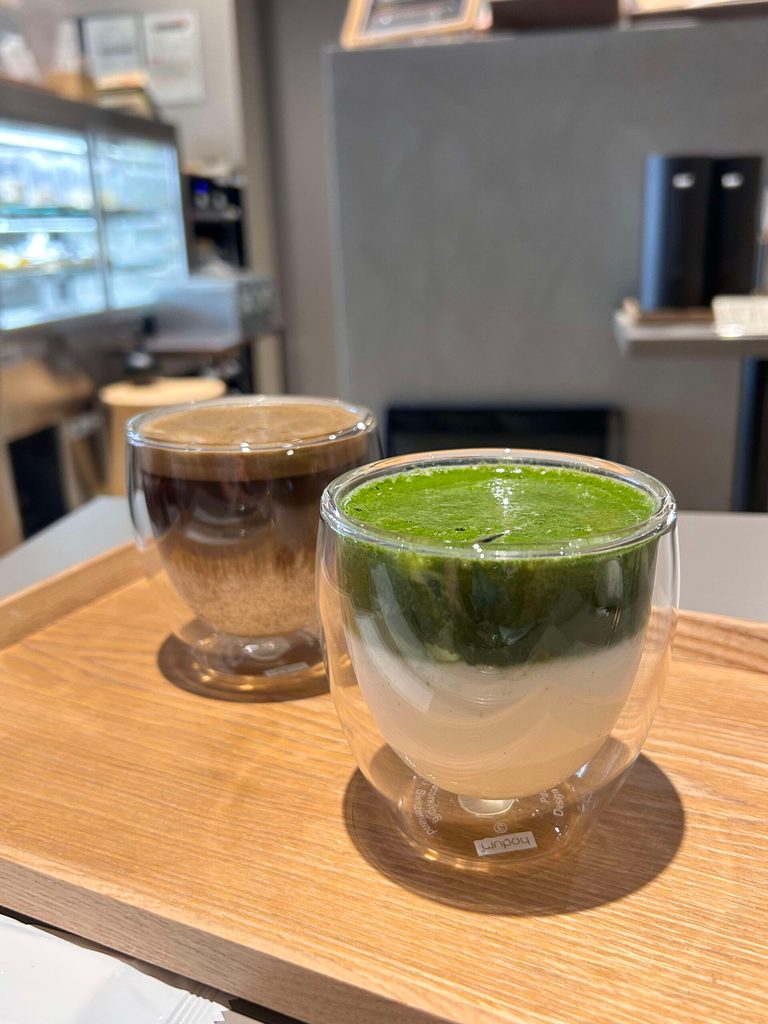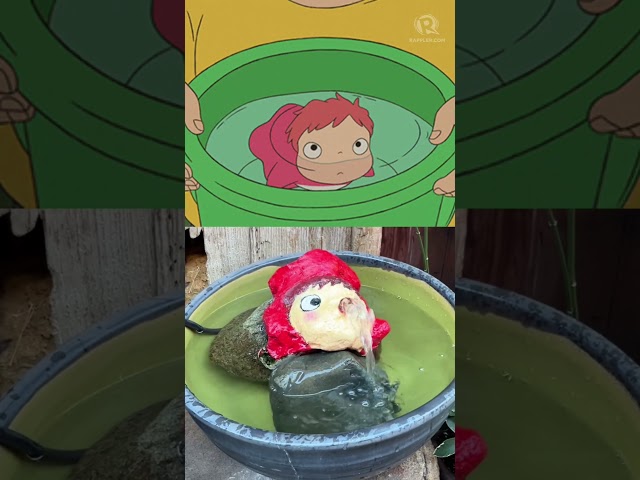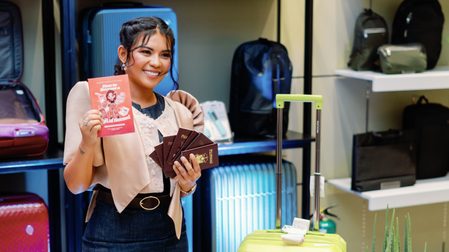When we plan trips to other countries, the most popular destinations are no longer the first places we immediately flock to.
Tokyo in Japan, Shanghai in China, and Seoul in South Korea — spots often featured in travel brochures because they’ve been visited countless times by countless people over the years — prove time and time again why they’re so popular in the first place.
Travelers nowadays are changing, though. With the days of post-COVID revenge traveling being long gone, people are now booking trips to lesser known places, and diving into activities you probably would have never considered visiting another country for.
Even in major cities, the attention shifts to cafes in secluded residential areas, novelty shops that have been around for decades but are only just beginning to be discovered, and bustling hawker stalls that are kept alive by nearby office workers and students.
 MATCHA AND HOJICHA. Mamedaruya Coffee in Hiroshima, Japan, is a five-minute walk from Hilton Hiroshima. Juno Reyes/Rappler
MATCHA AND HOJICHA. Mamedaruya Coffee in Hiroshima, Japan, is a five-minute walk from Hilton Hiroshima. Juno Reyes/Rappler
“People are looking further away from destinations they’re comfortable with. Even if they might go to Tokyo, they are no longer staying in Shinjuku and Shibuya and Ginza, the usual places. They’re going a little further and further,” Klook’s chief commercial officer Wilfred Fan told Rappler.
The main culprit — or catalyst, rather — lies in the palms of our hands: social media.
Experiences over anything
According to data from Klook’s Travel Pulse, 80% of Gen Zs and 78% of millennials are putting on their itinerary experiences they just came across on social media. It wasn’t through a thick guidebook that they thought to get a chibi portrait of themselves done at a night market in Bangkok.
It was likely through a traveler who happened to stumble upon the experience during their trip, and decided to share it in the form of a short video on platforms like TikTok, YouTube, or Instagram.
It’s a classic cycle, really. We discover an activity, we consider if it’s what we want to do, we make the purchase, then we share all about our experiences. And repeat.
Experiences are key now. Travelers aren’t only going to temples and art museums to experience a country’s culture — they’re also beginning to explore in the same way as people who have lived there all their lives.
“If you’re talking about big theme parks, you actually don’t have to market it. However, if you’re talking about something like a traditional jeans making workshop in Japan, nobody will know that it exists. Nobody will go and search for it. They will only know about it because they went on social media. Either they are scrolling and [they see it], or they search for interesting things to do in Japan and it’s one of the videos that pops up,” Marcus Yong, Klook’s vice president for global marketing, told Rappler.
@itshelenmelon made my own custom jeans in Tokyo!! this workshop is one stop away from shibuya in the Ebisu area at Betty Smith factory! Booked the jeans making experience on @Klook USA for $130! TIP: you DO need to book in advance because I saw a few groups get turned away! Takes about 1 hour and yes you go home with your jeans that day! #tokyo #japantrip #explorejapan #rawdenim #selvedgedenim #denim #klookpartner #workshop #jeans #customjeans #thingstodo #diy #shibuya #ebisu ♬ Big mood – aApVision
Travelers are now dipping their toes into niche activities like tea tasting ceremonies, renting cultural garb for a day, or even going on wellness retreats. They may not be able to keep a tangible souvenir from these experiences, but will it really matter at the end of the day if you’re coming home with irreplaceable memories anyway?
It’s also through this cycle that hidden gems no longer remain under the radar. Places that are usually referred to as “second cities” (think Sa Pa in Vietnam and Hiroshima in Japan) are becoming people’s first choices. They’re places that wouldn’t immediately be at the top of your mind if someone were to ask you to name cities from a tourism-friendly country, but in 2025, they’re climbing their way to the top.
It’s a welcome change — one that puts on the map destinations that are just as rich in culture and history, but just had yet to be talked about by more people.
For instance, I was able to explore Tomonoura, a quaint fishing port town in Hiroshima prefecture that inspired the Studio Ghibli movie Ponyo. Years ago, if I were to put together my own itinerary for Japan, it probably would not have even made it on the list. I would have stuck to wherever everyone else had gone.
Play Video

Videos encourage people to create unique memories while traveling
It’s content creators who are leading the charge, too. They go out there to show what a new place has to offer — all in a matter of a minute-long video at that.
Things aren’t as simple as just stitching chronological clips of a travel destination. With the dwindling attention span of social media users, they only have about three seconds to hook their viewers and show them why this destination that goes off the beaten path deserves a spot in their itinerary.
Content creator Alvin, who runs Just Got Fed on Facebook, TikTok, and Instagram, can attest to this.
“I think sa social media ngayon, everybody wants to showcase a different experience sa napanood nila. ‘Pag pupunta ka ng Hong Kong, hindi ko naman siya mashoshowcase kung Disneyland lang. So, hahanap ako ng iba, or mag-eexplore ako ng iba. Kaya what I want to showcase most is yung mga kakaibang areas, and kakaibang places apart from the common ones,” shared Alvin, adding that it’s the video hooks that are crucial.
(On social media nowadays, everyone wants to showcase an experience that’s different from what they usually see. If you’re going to Hong Kong, I can’t just showcase what it has to offer if I just focus on Disneyland. So, I look for something else, or explore other places. That’s why what I want to showcase most are the unique areas, and unique places apart from the common ones.)
Just as travelers rely on social media for destination recommendations, it’s becoming an outlet for them to ease their pre-trip anxieties, too. Videos on how to not get offloaded by immigration are usually sure viral hits, and so are video guides for getting your visa approved.

But for those traveling for the first time, Alvin’s best piece of advice is to always, always plan ahead.
“Hindi lang itinerary. Check the requirements, check all the limitations. Kasi once you travel, there are different cultures and different rules. So being familiar with that would make your trip easier… Sa Philippines mismo, ang dami nating kailangan na visa. Be prepared sa mga requirements kasi doon naman talaga ‘yung first barrier mo before you travel,” Alvin told Rappler.
(Not just your itinerary. Check the requirements, check all the limitations. Because once you travel, there are different cultures and different rules. So being familiar with that would make your trip easier… In the Philippines, we need so many visas. Be prepared with the requirements because visas are your first barrier before you travel anyway.)
It goes without saying that modern travel really has changed. People don’t flock to what’s popular as often anymore, short-form videos are king, and the value of experience are what people look for when exploring a new place.
All these, it seems, are here to stay. – Rappler.com


AloJapan.com